If Stanley Kubrick was alive in 2014, he would have been 86 years old today.
Sadly, in March 1999, he passed away in his sleep, just days after the final-cut screening of his last film “Eyes Wide Shut”, leaving behind a mind-boggling and formidable body of cinematic work.
Born in 1928 in the Bronx, New York City, Kubrick was quite often regarded as one of the greatest filmmakers of his generation. Staring out as a photographer at an early age, he acquired the visual skills he later perfected in his career.
He was definitely the filmmaker of his generation, who continuously pushed the boundaries of the cinematic form to levels never before seen more than any of his peers.
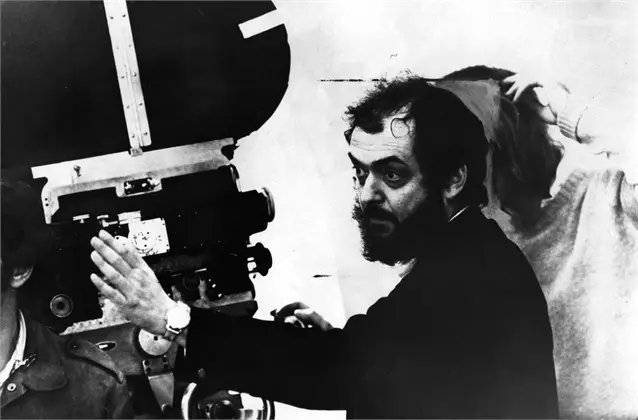
Self-taught from the very start, Kubrick quickly became proficient in every film department. His early work including “Fear and Desire” and “Killer’s Kiss” was very low-budget affairs, which served more as a practical film school to him more than anything else, according to Kubrick himself.
It wasn’t until his third feature film, the breakout heist-noir “The Killing”, which propelled his career and became a catalyst for his evolution as a master filmmaker, attracting the attention of executives at major Hollywood Studios such as MGM. The rest is history.

There is nothing new I can say that hasn’t already been said about Stanley Kubrick. However, I decided to write this post as more of a personal “what if… statement” than anything else.
Kubrick’s storytelling style, and especially visual techniques have been a major inspiration to me in my own work. Kubrick’s unique vision and style made a permanent mark on my psyche from a very early age.
So in this post, I want to share my story on how Kubrick work influenced me as a person and filmmaker, and more specifically how his mentality as a filmmaker, embracing technology, and finding innovative ways to tell a story, changed my life.
I still remember the day I saw “Full Metal Jacket”, the first Kubrick film I ever saw. I was thirteen, and it was a hot summer night in Eastern Europe in the early 90’s. We had just gotten our cable hooked up the week before, and I was watching movies constantly.
Now, for those of you from America or the rest of the Western world, getting access to cable channels in Eastern Europe in the early part of the 90’s was a monumental event. It changed everything. It opened the door for many kids like me, at the time, to a world never seen before. I started absorbing Hollywood films and film culture every single day.
It was the biggest change in my life at that point, an event only rivalled in terms of impact maybe by my first cinema experience, or the arrival of the Internet in Bulgaria a few years later. But, I digress.
I was learning English in school at that time and I saw “Full Metal Jacket” on a late night showing, without subtitles, which really helped me in two ways – I learned to listen and understand English speech a lot better, and understand the film in an almost purely audio-visual way – in images and sounds. It was such a immersive experience for me.
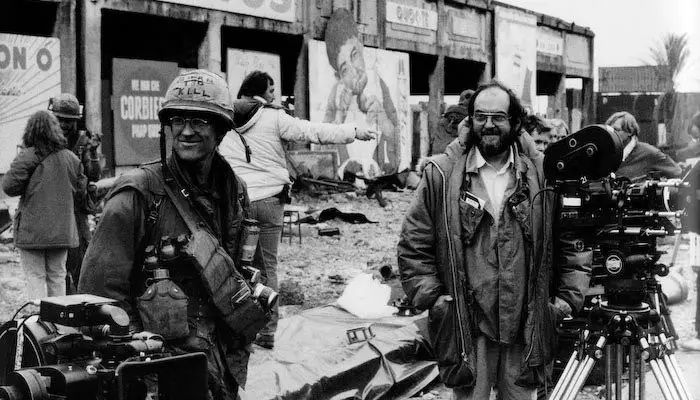
I had seen many war movies before, my favourite at that time was Oliver Stone’s Vietnam war masterpiece “Platoon”, which I had seen a year or so prior, but Kubrick’s war drama was something quite different.
At the time, I wasn’t old enough to maybe comprehend the psychology of the film, or fully appreciate the visual, stylistic, and technical methods he used, but what drew me into the story, was the unique structure of the film (it seemed like 2 movies into 1 at the time) and the incredibly empathetic performance of Vincent D’Onofrio as Private Pyle. I taped the film and re-watched it many times throughout that Summer, finding new details I hadn’t noticed before with every new viewing.
Kubrick became the first director I would research thoroughly, albeit, with my very limited resources. Remember, we’re talking pre-Internet times here circa ’93-’94. I found some interesting articles about “The Shining” in a few local magazines. There, I learned about some of his other films, which I tried to find in my local VHS shops.
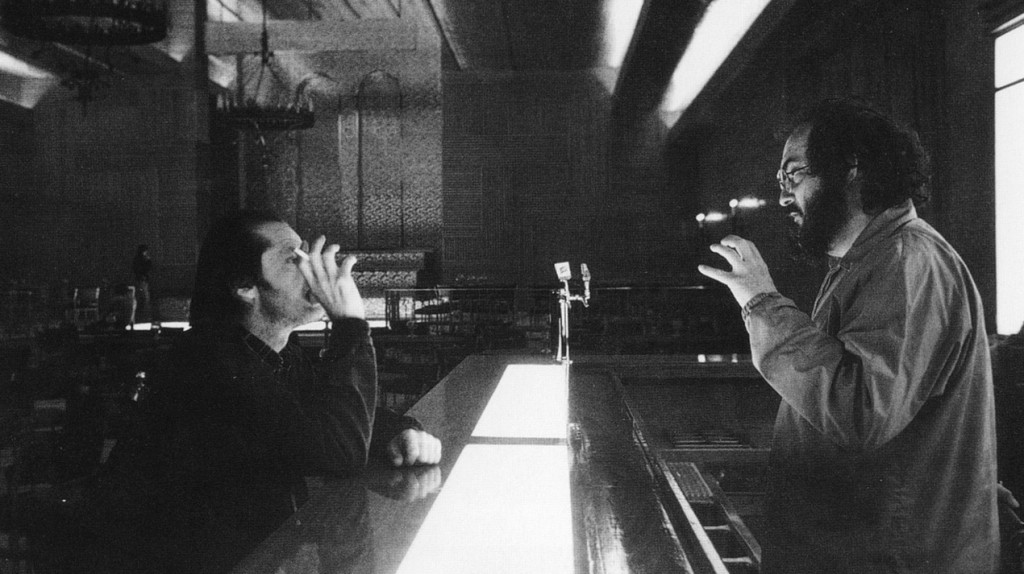
That same year, I saw “The Shining” on VHS, which was another huge event for me, and quite a traumatising experience at the same time. It redefined the horror genre for me, as at that point I was mostly used to watching slasher horror films like “Halloween” and “The Thing”.
Kubrick’s “The Shining” felt genuinely scary in a unique way. As a big fan of Stephen King, at the time, I was stunned to find out that a big director like Stanley Kubrick had directed “The Shining” a book for some reason, I wasn’t quite so fond of at the time.
However, that all changed after seeing Kubrick’s “re-imagining” of “The Shining”. In later years, I read about the Kubrick’s pioneering use of the Steadicam on “The Shining” which put things in filmmaking perspective a bit more.
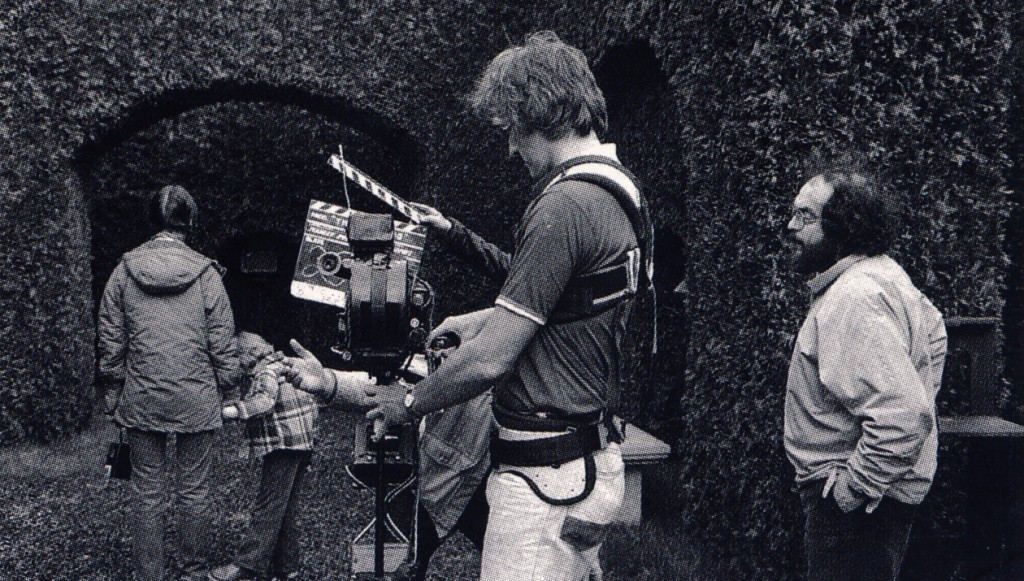
Later in high-school, I saw “2001: A Space Odyssey” but it was maybe a bit too much for me at the time. As I grew older, and arguably “wiser” (some would disagree), DVD’s replaced VHS and in college in the States, I saw the rest of the Kubrick’s films that were unavailable at the time in Eastern Europe.
I was particularly blown away by two films – “Barry Lyndon” and “2001: A Space Odyssey” for obvious reasons. The looked like nothing else out there. So real, and surreal at the same time. Kubrick constantly pushed himself to create a sort of a “new medium” of cinema. “2001…” has no equal in the history of cinema. It was the first film, that legitimised Science Fiction as a formidable genre in the world of cinema.
Up until that 1968, sci-fi films, with a few exceptions, had the status of low-budget “B” movies dealing with “man-in-suits” creatures involved in ridiculous plots to take over the world or something of sorts.
“2001…” changed the face of cinema forever. It even changed the way stories are told visually. Probably no one out there can tell you exactly what the film is about, but that’s not the point. The point here is that Kubrick used the latest and greatest technology at the time, which was primitive by today’s standards, and he and his team were able to create a cinematic masterpiece, which has stood the test of time and probably always will.
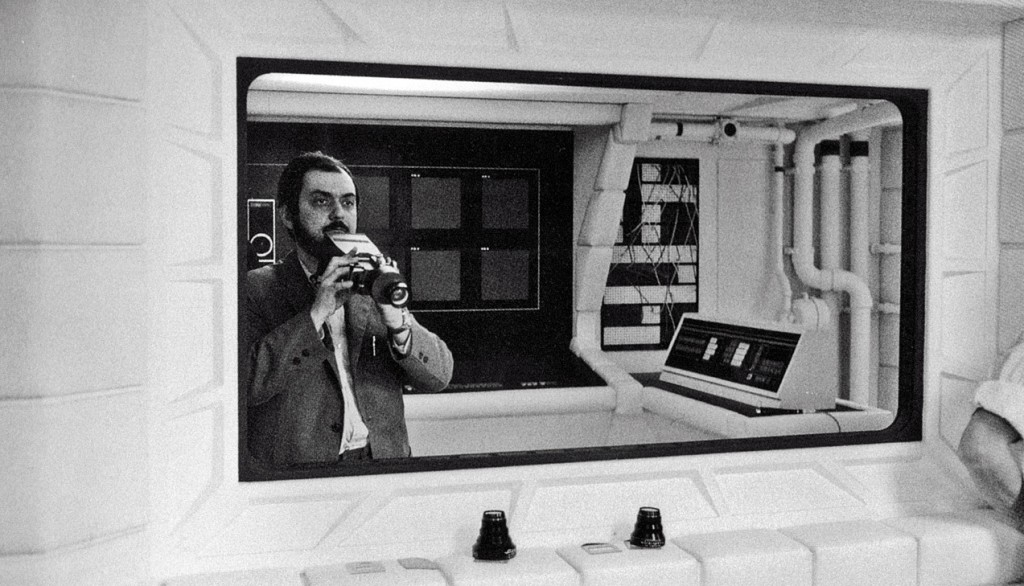
You can put “2001…” next to any CGI marvel of modern cinema, be it “Avatar” or “Gravity”, or whatever, and you’d see the special effects in “2001…” still hold up today even when put against the most sophisticated CGI in modern cinema.
Look at what David Fincher is doing with 4K today. For me, David Fincher is the Kubrick of his generation. He is as close as it gets to the intelligence and technical perfection of Kubrick. He embraced 4K years ago, when most of his peers in Hollywood were quick to dismiss it. Fincher uses CGI in a very unobtrusive and creative way, the way I think it should be used – to augment the story, not to overtake it.
There’s a lot more to Fincher’s work than 4K, just as there was a lot more to Kubrick than using custom made super-fast, NASA-designed Zeiss glass to capture the naturalistic atmosphere of pre-electricity era “Barry Lyndon” for example. What sets Kubrick apart from everyone else is his unique ability to present his vision in an innovative way with almost every film.
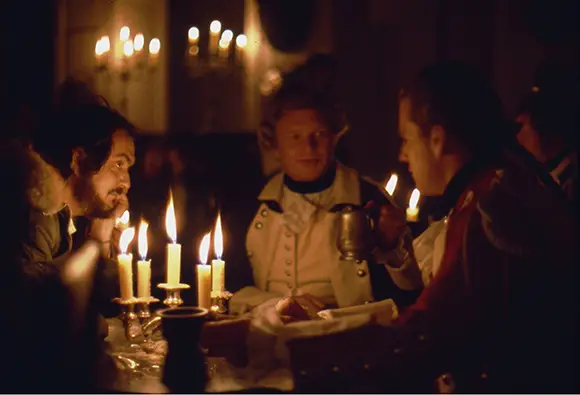
There is so much independent filmmakers can learn from Kubrick’s films and his way of working. He’s one of the original DIY directors, often having to work in different departments, and technical enough to operate his camera and make difficult directorial decisions. It’s not very often that you have a technical director, who is also very good with actors, such as the case with both Stanley Kubrick and David Fincher.
Just as he changed cinema with “2001: A Space Odyssey” back in 1968, cinema has changed since he’s been gone. I wish he was still alive and I wish I could see what he can do with the modern digital tools such as 4K acquisition, digital colour correction, and digital filmmaking technology as a whole. I am sure that Kubrick would have embraced the immense possibilities of shooting in 4K+, such as the incredible detail, DR, re-framing, and colour correction.
Back in Kubrick’s days in the late 60’s and 70’s if there was a kid in a basement somewhere who had the idea for the next “2001…” sci-fi masterpiece, he would have had to wait many years, go to film school, get recognition from the Studio system, move up the ladder, until he could get the opportunity to work with the best technicians and craftsman at the time in the film industry, who would help him get his vision on the big screen.
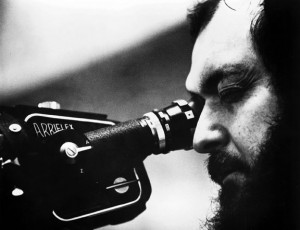
Today, as a matter of fact, quite possibly while I am writing this article in my crappy studio flat in North London, some kid in small town in Arizona, might be dreaming of his big sci-fi opus, but it won’t be long before he would be able to pick up his 4K DSLR, master After Effects and editing software, get a small crew and blow your minds with his creativity.
We should be grateful for living in such exciting times. And quite frankly we should feel a bit “spoiled” even by the limitless possibilities offered by current filmmaking technology. It is not mandatory to shoot your next short film or debut feature film in 4K, not at all. It is an only an option.
Back in the days of film, there weren’t many options. You had to shoot on 35mm film if you want to be taken seriously. And you had to have deep pockets, or lots of influential friends in the right high places. Those of you celluloid fanatics out there will jump and say – 4K, what? Film is 8K+… too bad there no projectors in the world capable of displaying the full resolution of celluloid film… but I digress again…
This post, despite it’s title, is not about 4K or technical stuff. It’s about a way of thinking. A radical way of thinking; a way of thinking about how to give your audience something unique, through your own vision, while incorporating an innovative approach to traditional methods of filmmaking.
It’s about disruptive technology like for example – pocket-sized “Pocket Cinema Camera’s” from Blackmagic Design, which shoot 12bit raw and ProRes on an SD card for less than what it cost to process a few cans of 400′ film stock.
Lets not forget a very important camera – the original Canon 5D Mark II, which has a VistaVision-sized digital full-frame sensor… or the incredible stuff that the folks at Red Digital Cinema have been doing in the field of 4K acquisition and workflow for the last 7-8 years.
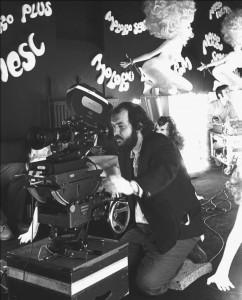
Film as in film celluloid technology is on its death bed. Despite people like Christopher Nolan, Wally Pfyster, and Quentin Tarantino, who are still clinging onto film and living in their own bubble.
Digital filmmaking technology has not only arrived, but become the standard and the future of not only cinema, but visual storytelling as a whole. Digital Cinema Cameras like the ARRI Alexa and the Red Epic are permanent fixtures on not only $1-5 M low-budget films, but also on massive Hollywood franchises like “The Hobbit”, and James Bond (Skyfall) in addition to many more.
I just wish that Kubrick was alive so we can be inspired again by his work in 4K, which I am sure he would have embraced. Why?
Because of his unique forward thinking; because of his ability to see where technology was going and how the cinema landscape was going to change.
There is plenty one can learn from his way of thinking and his attitude towards the cinema medium.
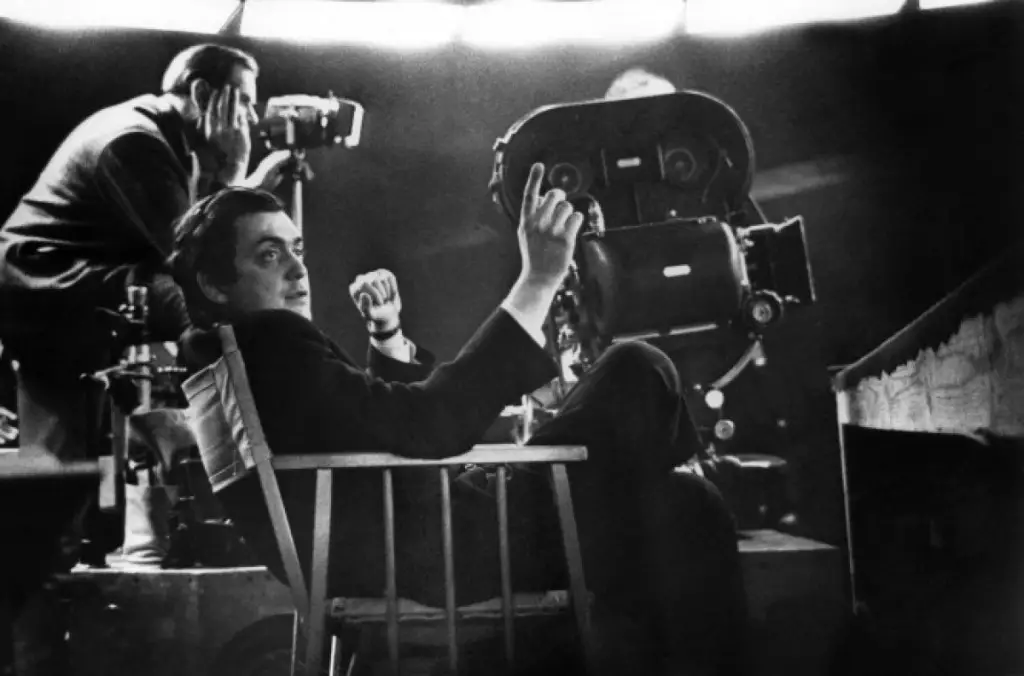
Ask yourself this – if Kubrick was able to achieve his unique visual style, that look, that atmosphere of his films with pre-computer and pre-digital technology, imagine the possibilities of what he could have done with 4K if he was alive today?
We’d never know for sure, but I am sure he would have embraced not only 4K, but also advanced the medium even further with today’s advanced digital technology.
Disclaimer: As an Amazon Associate partner and participant in B&H and Adorama Affiliate programmes, we earn a small comission from each purchase made through the affiliate links listed above at no additional cost to you.
Claim your copy of DAVINCI RESOLVE - SIMPLIFIED COURSE with 50% off! Get Instant Access!





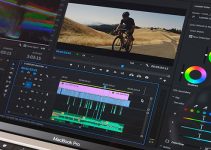
Very interesting point of view from a good friend of mine, but I would prefer believing that he would’ve stayed with film. Don’t know, who am I to say, maybe he might have been crazy about the new 4k tech things!! We can’t actually say. Personally I prefer shooting on what ever I can get my hands on and I don’t actually know would I ever have the chance to work with film. Yes you guys are absolutely right for one thing, that nowadays we are really spoiled with all the available technology we have to make a movie(not calling it a film for a reason). I think that as spoiled we are its great that we have all this tech available for young moviemakers. It’s way more easier to make a movie now then back in those days. Damn it I can’t wrap up, just because this article has unlocked so much in my mind right now, but….!
Thanks for the support, mate. It means a lot to us. I miss Kubrick, he was not like the others. I’m seeing a lot of him in Fincher. Would have loved to see what Kubrick would have done with A Red Epic for example if he was alive today… or with a Sony F65… any other digital cinema camera that shoots 4K…
I don’t understand your point… ? Resolution ? More practical camera dimensions ?
Seriously I don’t get how this would change anything. I’ll just be glad that he did not die and made other movies, don’t care about him using an Alexa or a 4K cam… Try to go and watch 2001 in 70mm then you’ll get it
Kubrick would have stayed with film, it depends on the project but digital would seem too weak to him, too “diluted”.
Embraced 4K?
No,.. I think he would have been a driving force behind 4K, and 8K, and he would have used it in ways that the rest of us haven’t even considered yet.
Shooting film (versus digital) is not only a historic tribute to a medium, and an artistic choice (Kubrick famously said “The truth of a thing is in the feel of it, not in the think of it”), it is also a technical choice allowing a film to be preserved through the ages in a way no digital film can.
I doubt that Kubrick would have enjoyed shooting digitally – he would have, like Tarantino, Spielberg, Nolan and others, shot on 70mm or 35mm film, knowing that in 300 years from now, the films would still be viewable as easily as holding a slide in front of one’s eyes, whereas all technology changes or disappears within a couple of years time.